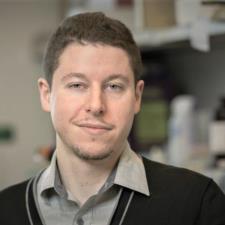I would prefer to call the FoF1 ATP synthase protein complex a rotary molecular machine. The Fo part of the machine is responsible for facilitated transport of protons down its concentration gradient (i.e. from the inter-membrane space towards the mitochondrial matrix). The Fo component of the complex has both channels (more specifically half-channels in the a-subunit), as well as carrier components (more specifically the "c-ring"), which function to conduct the proton transport. The transport of protons leads to the physical rotation of the "c-ring" which is directly attached to the rotary component (called the gamma shaft) of the F1 ATPase. So as the "c-ring" rotates, it creates a torque on the gamma shaft, causing it to change conformations (i.e. rotate by 120 degree steps) inside the alpha-beta heterohexamer of the F1 ATPase. This series of conformational changes in the F1 ATPase confers changes in active site structure for the three active sites, which powers the synthesis of ATP + H2O from ADP + Pi sequentially at each site. Altogether, it is using the free energy of proton transport (i.e. thermodynamically favorable reaction) to drive the enzymatic synthesis of ATP (i.e. thermodynamically unfavorable reaction).
There are a number of good videos that would help visualize this amazing molecular machine!
https://youtu.be/GM9buhWJjlA
https://youtu.be/b_cp8MsnZFA
There are numerous examples of multifunctional enzymes in biology. Complex 1 in the electron transport chain in mitochondria functions in the oxidation of NADH and transports electrons to the Q pool as well as pump protons out of the mitochondrial matrix. DNA polymerase 3 complex has subunits that catalyze the enzymatic synthesis of DNA and other subunits that catalyze the enzymatic exonuclease reaction if mistakes are made in the copying process. This is just two examples off the top of my head.





